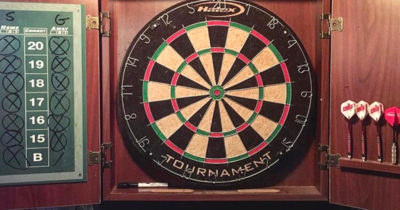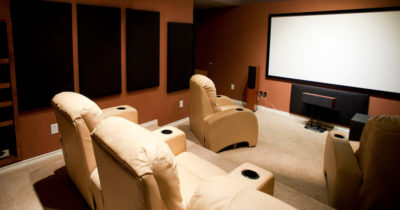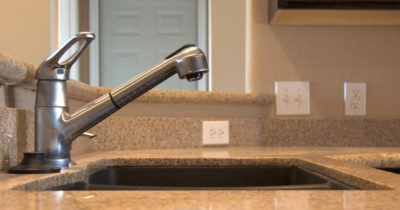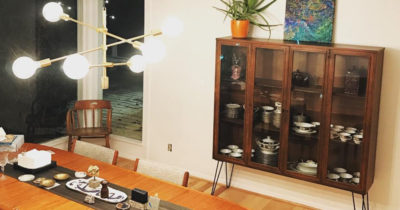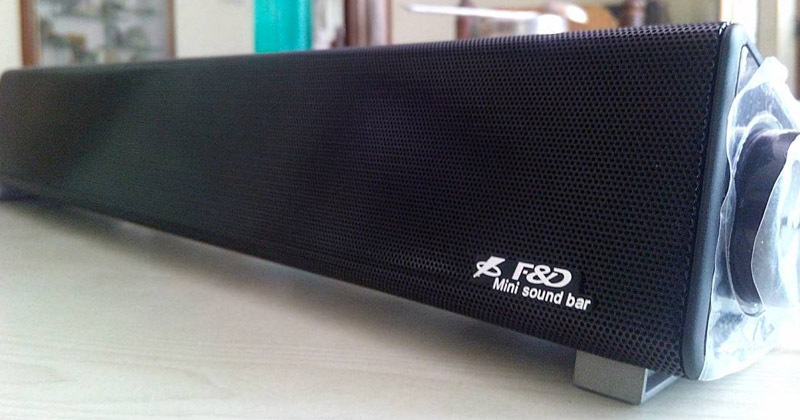
What Is A TV Sound Bar & How Does It Work?
Instead of smaller speakers distributed all around the room a sound bar lets you to install one piece of equipment and greatly improve your TV’s audio quality.
These use internal speakers with varying positions to bounce audio around the room creating the illusion of a surround-sound setup.
You may have noticed that sound bars have just recently become incredibly popular. There’s a reason behind this.
As televisions have become thinner so have their speakers. TV speakers have grown so thin and weak that many current models struggle to put out enough sound to be heard clearly, even from a few feet away.
Sound bars solve this problem.
As their name suggests, sound bars are normally in the shape of a bar. A few inches tall, an inch or so deep, and anywhere from one to five feet long.
However other models called a sound base are larger box shapes, meant for televisions that aren’t wall-mounted. Some of these soundbases are made to be hooked up to a subwoofer but most function on their own without any accompanying speakers.
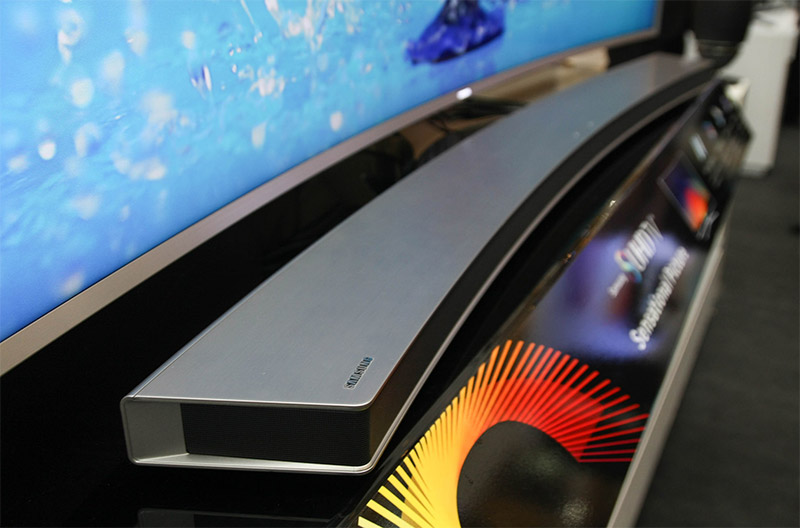
Because sound bars are a simple piece of equipment they’re affordable and generally the best choice for TV goers who want instantly improved audio.
How Does A Sound Bar Work?
So how does a small and remarkably thin piece of equipment give out similar audio quality as a full surround sound system?
It’s all in the angles.
Inside the sound bar is up to seven separate speakers each set at a slightly different angle. One may be angled straight ahead while two others angle up towards the ceiling or to one side.
This arrangement results in sound bouncing off your ceiling and walls which tricks your ear into thinking the sounds are coming from all around the room. When they’re actually all originating from that little sound bar nestled on your TV stand.
All sound bars are made to replicate this effect with varying speaker configurations. But look for a multi-channel sound bar for the best quality.
Installing a sound bar is also very simple. Most models have indentations in the back letting you easily hang the sound bar with a couple small nails.
This ease of installation has played a large role in the sound bar’s rise in popularity over the more traditional surround sound systems, most of which require running wires all around the room. That’s great for a custom media room but certainly not for a small living room.
The sound bar will only require a power source and, in some cases, a wired connection to the television. Although modern sound bars usually have bluetooth so they can connect to your TV wirelessly. Cool right?
Sound bars are also compatible with universal TV remotes. Some sound bars may come with a specialized remote but you can also program your own and save yourself that on that extra remote.
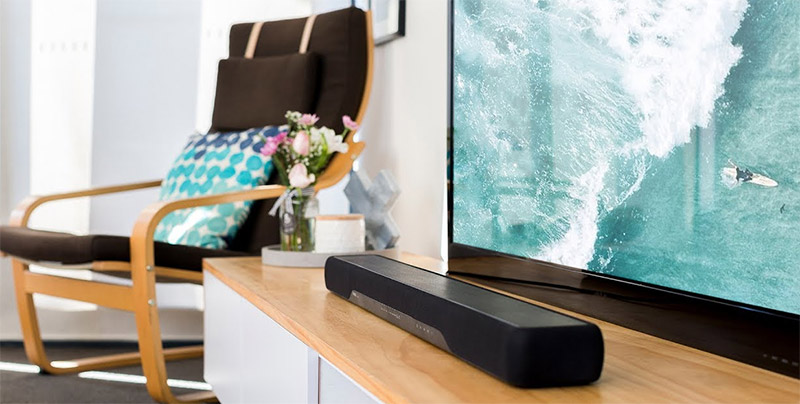
How Do I Shop For A Sound Bar?
The first step in shopping for a sound bar is deciding what your priorities are.
Do you just need a budget piece to raise the sound quality a bit? Or are you willing to spend more to ensure you have incredible sound quality?
Sound bars can range widely in price(obviously) from as little as $30 up to several hundred dollars for advanced models. A few features you might want to consider:
- Built-in Bluetooth: Having Bluetooth built into the soundbar allows you to operate it wirelessly with things beyond your TV such as your cell phone. This means you can use the bar as a music player when the television isn’t on.
- USB Input: Much like Bluetooth, this option lets you use the soundbar as a music player via USB. Some models even let you plug in a USB holding your favorite tunes and they’ll start playing automatically.
- Wi-Fi: If you use streaming services like Spotify, Pandora, or Apple Music then having wifi in your sound bar will be surprisingly useful.
- Subwoofer Compatibility: While most sound bars are made to be used alone, many can be hooked up to a subwoofer. If you like watching action movies or really enjoy getting the full bass experience this extra feature might be important to you. Wired and wireless subwoofers are available depending on your budget.
- Dialogue Enhancement: We’ve all watched those television shows where the sound drops dramatically between the action fight scene and the following discussion between characters. Sound bars with dialogue enhancement eliminate that problem by detecting human voices and enhancing that part of the sound mix.
- Volume Leveling: Tacking onto those loud fight scenes, how many times have you been watching a show at a reasonable volume only to be deafened when the commercials come on? Sound bars with volume leveling even out those differences automatically to prevent you from scrambling for the remote.
When you see all the benefits it should be clear why sound bars are a staple of modern television viewing.
Between the ease of installation and the simple volume enhancements over expensive surround sound, these little rectangular blocks really do pack a punch.
Add in the decline in speaker quality in our ever-thinning televisions and sound bars are practically a necessity in many households. This addition to any home setup can greatly enhance your viewing experience for a minimal investment.


